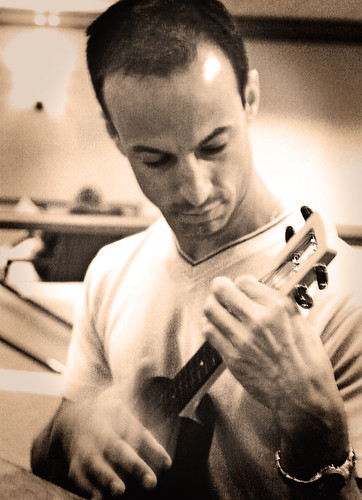DENTALLY RETARDED.
The dentist would bounce into the office holding a dozen dental hooks in each hand. He’d thrust them into my mouth—probing, prodding and tapping like a jazz xylophonist on his fourth can of Dr. Pepper®. When every square millimeter had been poked for soft spots, he’d snap his fingers and an assistant would appear carrying lead-lined blankets. They’d mummify me from toes to scalp in 97 kilos of lead, then take several hundred x-rays of my mouth.
We’d then rush into an IMAX® theater where images of my teeth—dwarfing those of King Kong—projected onto the screen. The dentist would inevitably whip-out a laser pointer and say something like, “Here on the upper-right incisor, we see a slight discoloration two microns in diameter. This could be the pre-pre-beginning stage of plaque formation. Brush and floss this area carefully, or it might develop into a small cavity seven to nine years from now.”
This was the level of dental care to which I’d grown accustomed in the US. And my experience was by no means unique. If you don’t believe me, then buy a Carly Simon CD and look closely at the cover photo.
My first visit to a dentist in Spain, however, was a different story. The dentist entered the room and demanded, “Tell me where hurts!”
“Nothing hurts,” I answered. “I’m just here for a check-up and cleaning.”
Looking puzzled, he grabbed a dental hook and tapped the nearest bicuspid—not so much to probe for soft spots, but rather to confirm that this calciferous object rising from my gum-line was indeed a tooth, and not the hallucinogenic by-product of a morning’s worth of second-hand nitrous oxide.
He then leaned forward, put his hands on his knees, and—from a distance of approximately two meters—gazed into my mouth like a truck mechanic pondering the source of a strange rattle in a diesel engine. Finally, he stood upright and confidently announced, “I see no cavities.”
I was taken aback by this relaxed approach to dentistry. And I started to wonder whether, as a result, the average Spaniard has problems with his teeth—or indeed, has teeth at all.
I thus embarked on an earnest—albeit unscientific—survey. For weeks thereafter, I carefully observed the teeth of every Spaniard with whom I conversed or had close contact. This was an endeavor that undoubtedly caused many Spanish women to wonder, “Why is this strange man *not* looking at my breasts?”
In the end, however, my survey yielded a startling conclusion: Most Spaniards have very nice teeth. Certainly better than the specimens one is likely to find in places like rural Arkansas or Windsor Castle.
How could this be? Well…I have some theories.
Perhaps US dentistry is unnecessarily conservative.
Perhaps the Mediterranean diet—with its abundance of fresh fruits and vegetables—is nature’s recipe for keeping one’s choppers in good health and working order.
Or perhaps the secret is the Spanish grappa known as orujo. Orujo does, after all, look, smell and taste like Listerine®. And based on a different survey that I’ve recently conducted, an awful lot of people gargle with it several times per day.








